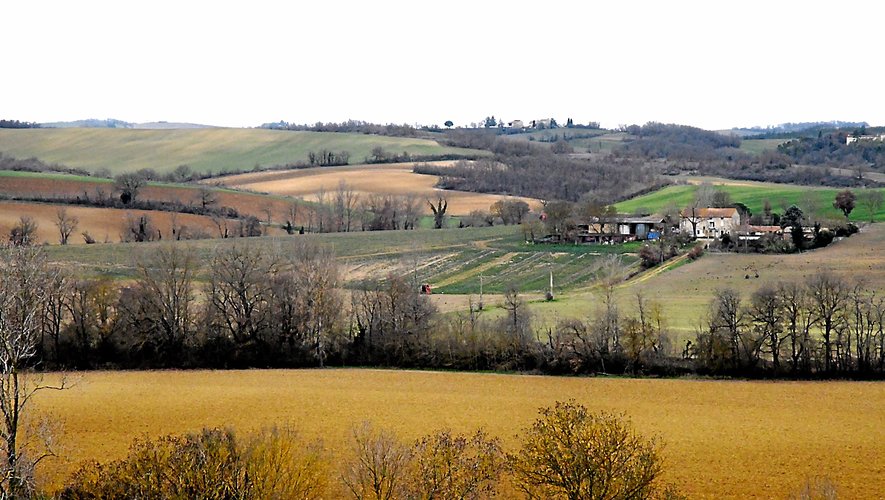A year after applying for a building permit for the TotalEnergies agrovoltaic project with an area of 170 hectares in four municipalities, including Plaigne, at the end of 2022, RWE again made a 58 ha project in December 2023. in the town of Plaigne.
“We are surrounded this time!” At the beginning of March 2024, Philippe Maugein, president of “What landscape for La Piège?”, summed up the fatigue of the association created in response to the TotalEnergies agrovoltaic project, proposed for more than 172 ha and the municipalities of Saint-Sernin, Belpech, Pécharic-and-le-Py and Plaigne. Symbol a “poorly controlled development of terrestrial photovoltaics”, estimates the association. Who if they confirm it “The need to make an energy transformation is proven and does not require discussion”underlines “that this must be done without jeopardizing our agricultural, environmental and landscape heritage”.
3rd project on 28 ha
But more broadly, it is the increased appeal that La Piège creates that drives the concern. At the end of 2023, RWE immediately submitted a building permit for a 58ha agrovoltaic park… in Plaigne. If we add another project, implemented by the company REDEN in Lafage, just examined – and rejected – by the departmental commission for the protection of natural, agricultural and forest areas (CDPENAF), with 28 ha of photovoltaics on land associated with sheep farming, the cup is full, consider “What landscapes for La Piège?”.
The association’s deputy secretary, Benjamin Flageolet, begins by pointing to the TotalEnergies project “completely opaque”. Conscious “difficulties faced by farmers”lures with valuable subsidies, he recalls “that we also have to think about the effects on the rest of society. Without forgetting that it creates chaos in the villages”. While he is willing to acknowledge RWE’s seeming goodwill when it comes to information, he remains skeptical: “It’s a little surprising, artificially modifying the soil. The law considers it not artificial, but we are playing with words.” An opinion that raises the question of the global vision of the development of photovoltaics, when the Occitanie region in its REPOS strategy (Positive Energy Region) has set ambitious targets for the production of solar energy: 3,901 MW of installed capacity in 2022 to 15,000 in 2050.
So who will implement protective measures and at the same time respond to major energy challenges? Benjamin Flageolet hopes: “We have seen rather positive signals from the prefecture.” In January 2024, prefect Christian Pouget set the prerequisites. For The Trap, “where farmers have inexplicably lost compensation for natural handicaps. We need to support them, but again not with solutions that are worse than remedial measures.” And more generally for Aude: “If tourists come to the department, they see the countryside, the vineyards, the hills, not necessarily the photovoltaic fields.” The principles that resonated on March 14, 2024 with the publication of the Territorial Directorate of the Department (DDTM) dated “instructions concerning the preliminary agricultural study (EPA) in the Aude department”.
Mandatory EPA for all projects “likely to harm the agricultural economy of the territory”with the need to prevent or reduce impacts before considering compensation. Document that replaces the 2018 reflection notebook. Need to update: “If the volume of affected projects remained modest in the period 2017-2019 (2 to 3 per year), their number increased from 2020 due to the strong growth of ground-based photovoltaic park projects, which in Aude represent the vast majority of projects submitted to the EPA.”
“In the face of observed space consumption,” reminds DDTM “main principles to consider when looking for land to implement your projects”. With the first principle“avoid farmland” and “support anthropized areas, abandoned agricultural areas, photovoltaic development on roofs, parking lots, ZAC,…” For “to limit the impact of the project on the agricultural economy of the territory”. And one “second principle”that of“Avoid high proportion agricultural land. If the project cannot strictly avoid all agricultural land, it is essential to avoid irrigated or irrigable land with high agronomic potential or used for high value-added production.”. The principles on which the rules of the game connected with the long-awaited decree “on the development of agrovoltaism” will be loaded in a few weeks.
photovoltaic, agrovoltaic

